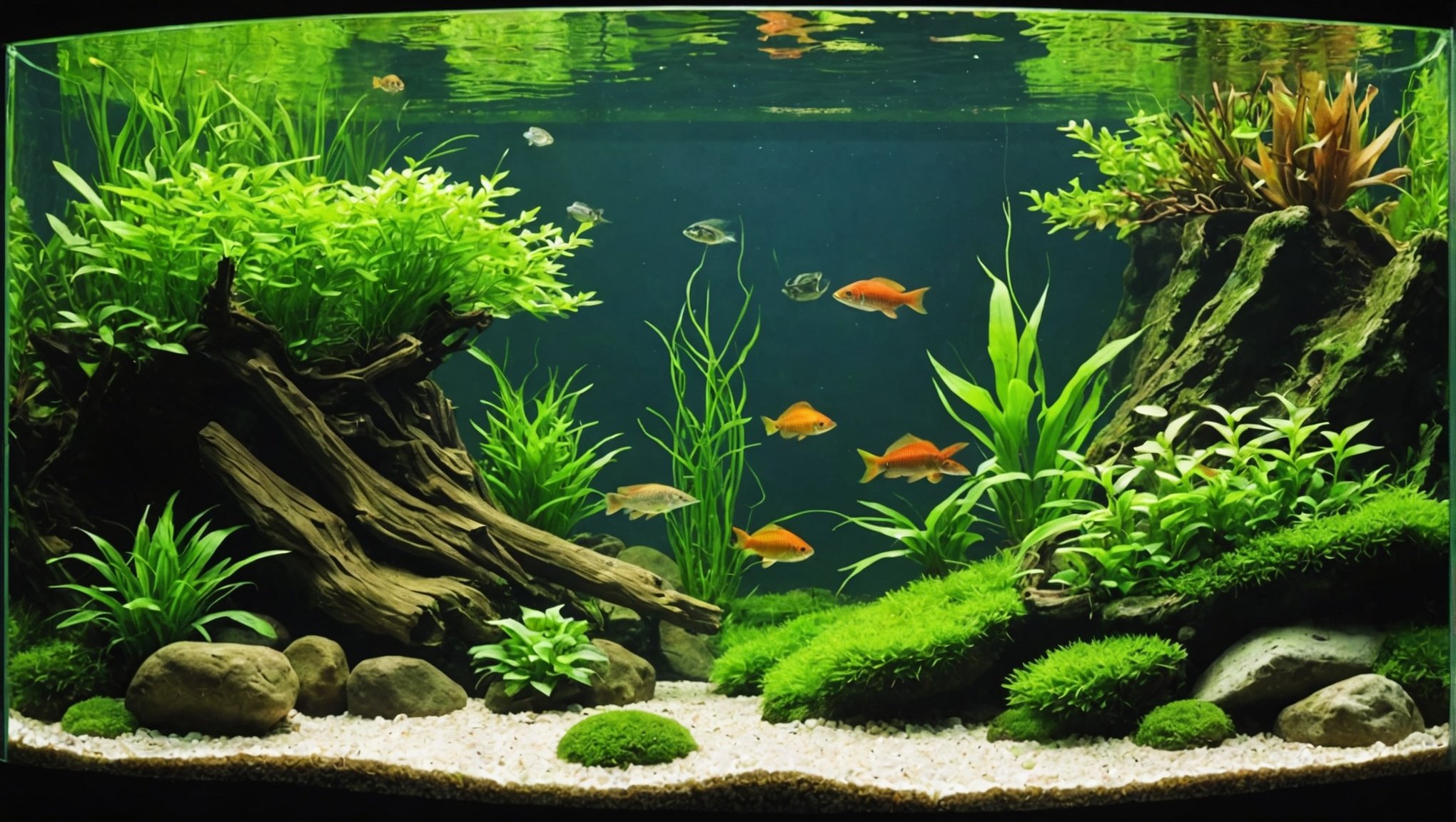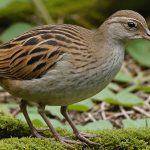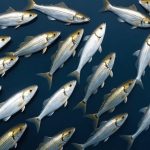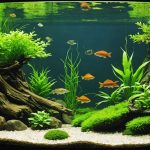Creating a biotope aquarium for native British freshwater species offers a unique opportunity to celebrate local biodiversity. This guide walks you through crafting an authentic aquatic habitat that reflects regional ecosystems. From selecting native plants and fish to understanding specific water parameters, you'll cultivate a thriving environment that enhances both your space and understanding of nature. Discover essential tips to create a balanced, sustainable aquarium that honors Britain's rich aquatic life. Let's embark on this rewarding journey together!
Understanding Biotope Aquariums
Exploring the intricate world of biotope aquariums and their natural inspirations.
A découvrir également : Creating a Safe and Stimulating Indoor Cat Garden: A Comprehensive Guide for Feline Happiness
A biotope aquarium is a meticulously crafted aquatic environment that replicates a specific natural habitat. These aquariums emphasize the inclusion of native species, ensuring that the plants, fish, and invertebrates coexist as they would in their natural setting. This approach not only offers aesthetic appeal but also promotes the health and well-being of the aquarium's inhabitants.
Characteristics of Biotope Aquariums
Key features that define and differentiate biotope aquariums.
A découvrir également : Crafting the Perfect Safe Haven: Tips for Designing an Engaging Hamster Habitat in Your UK Home
- Native Species: These aquariums exclusively house species originating from the same geographic area.
- Natural Aesthetics: Emphasis on replicating the appearance and conditions of a specific ecosystem.
- Ecological Balance: Designed to maintain the natural interactions and relationships found in the wild.
Freshwater Ecosystems in Britain
An overview of the diverse freshwater ecosystems found across Britain.
Britain's freshwater ecosystems are home to a variety of biotopes, ranging from rivers and lakes to wetlands. These environments are characterized by their unique species and ecological interactions. By recreating these ecosystems in a biotope aquarium, enthusiasts can appreciate the beauty and complexity of Britain's natural aquatic landscapes. This approach underscores the importance of preserving native ecosystems and encourages responsible aquarium design.
Essential Equipment for Your Biotope Aquarium
Equip yourself with the right tools to create a thriving aquatic habitat.
Necessary Equipment
Setting up a biotope aquarium requires careful selection of aquarium equipment. Essential items include a tank, substrate, heater, and thermometer. Each piece plays a vital role in maintaining the desired environment.
Filtration Systems
Choosing the right filtration system is crucial for sustaining water quality. Options include:
- Canister Filters: Ideal for larger tanks, offering powerful filtration.
- Hang-On-Back Filters: Suitable for medium-sized aquariums, easy to maintain.
- Sponge Filters: Perfect for smaller tanks, gentle on delicate species.
These systems help remove waste and maintain a healthy balance.
Lighting Requirements
Proper lighting is essential for plant growth and the overall aesthetic of your aquarium. LED lights are energy-efficient and customizable, allowing you to simulate natural light cycles. Ensure your lighting system supports the specific needs of your aquarium's native species.
"The right equipment can transform a simple tank into a vibrant ecosystem."
By understanding and investing in the right tools, you can create a biotope aquarium that thrives and captures the essence of its natural inspiration. This approach not only enhances the beauty of your setup but also supports the health of its inhabitants.
Selecting Native British Freshwater Species
Discover the rich biodiversity of British freshwater habitats.
Native Fish Species
When creating a biotope aquarium, selecting native fish species is crucial. Popular choices include the Three-spined Stickleback, known for its adaptability, and the elegant European Minnow. These species are well-suited to mimic British freshwater environments, offering both ecological balance and visual appeal.
Aquatic Plants
Incorporating aquatic plants native to Britain enhances the authenticity of your aquarium. Consider adding the Water Crowfoot, which thrives in flowing waters, or the Hornwort, a versatile plant that supports aquatic biodiversity. These plants not only beautify the tank but also provide essential cover and oxygenation for fish.
Importance of Biodiversity
Maintaining biodiversity in your aquarium is vital for ecological stability. A diverse range of species fosters natural interactions and reduces the risk of disease. Ensuring species compatibility is key, as harmonious relationships between fish and plants create a thriving ecosystem.
"A well-balanced biotope aquarium mirrors the complexity of nature, promoting both beauty and health."
By focusing on native species and fostering biodiversity, aquarists can create a sustainable and captivating aquatic environment that pays homage to Britain's natural heritage.
Designing the Aquarium Layout
Transform your aquarium into a natural masterpiece with thoughtful design.
Principles of Aquascaping
Aquascaping is the art of arranging aquatic elements to create a visually appealing and natural aquarium layout. Start by envisioning the natural habitats you wish to replicate. Consider the flow of water, the interplay of light and shadow, and the balance of colors. These principles guide the placement of elements, ensuring a harmonious environment.
Mimicking Native Habitats
To capture the essence of native habitats, recreate the landscapes found in your chosen ecosystem. Use rocks and wood to form natural structures, mimicking riverbanks or lake shores. These elements provide shelter and breeding grounds for aquatic life, enhancing the authenticity of your setup.
Placement of Elements
Strategically place plants to create depth and texture within the aquarium. Consider a bulleted list for optimal placement:
- Foreground: Short plants for open space
- Midground: Medium plants for transition
- Background: Tall plants for height and concealment
This structured approach to aquascaping not only boosts the aesthetic appeal but also supports the well-being of your aquarium's inhabitants. By thoughtfully designing your aquarium layout, you create a dynamic and inviting underwater world that mirrors the complexity of nature.
Water Parameters for Native Species
Ensuring optimal conditions for your British freshwater biotope aquarium.
Ideal Water Temperature and pH Levels
Maintaining the correct water quality is crucial for the health of your aquarium's inhabitants. British freshwater species thrive in temperatures between 15-20°C. The pH levels should be kept slightly acidic to neutral, ideally between 6.5 and 7.5. These parameters help replicate the natural conditions of British waters, promoting the well-being of your native species.
Importance of Regular Water Testing and Maintenance
Regular testing of water parameters is essential to ensure stability. Use reliable test kits to measure water quality, focusing on temperature and pH levels. Consistent monitoring allows you to detect any changes early and take corrective action.
"Consistent water testing is the key to a thriving aquatic ecosystem."
Techniques for Maintaining Stable Water Parameters
To maintain stable conditions, consider the following techniques:
- Frequent Water Changes: Helps regulate water quality and remove toxins.
- Use of Buffer Solutions: Stabilizes pH levels.
- Proper Filtration: Ensures consistent temperature and reduces fluctuations.
By understanding and managing these aspects, you can create a sustainable and healthy environment for your aquarium's native species. This attention to detail fosters a harmonious balance, reflecting the complexity and beauty of Britain's natural aquatic ecosystems.
Planting and Setting Up the Aquarium
Creating a lush environment requires careful planning and execution.
Best Practices for Planting Aquatic Flora
Planting techniques are essential for establishing a thriving aquarium. Begin by selecting healthy plants and trimming any damaged leaves. Gently insert the plants into the substrate, ensuring the roots are covered but not too deep. This encourages root growth and stability. Use planting techniques like grouping similar species together to create natural clusters.
Choosing the Right Substrate for Plant Growth
Selecting the appropriate substrate is crucial for plant growth. A nutrient-rich substrate supports root development and provides essential minerals. Options include:
- Gravel: Offers good drainage and is easy to clean.
- Sand: Mimics natural riverbeds and is gentle on roots.
- Aquasoil: Rich in nutrients, ideal for demanding plants.
Step-by-Step Instructions for Setting Up the Aquarium
Setting up your aquarium involves several key steps. Begin by placing the substrate evenly across the tank bottom. Fill the tank halfway with water, then position your plants using the chosen planting techniques. Add additional decorations like rocks and driftwood for a natural look. Finally, complete the fill and install your filtration and lighting systems. This method ensures a balanced and healthy environment for both plants and aquatic life.
Cycling Your Aquarium
Establishing a balanced ecosystem through effective cycling.
Understanding the Nitrogen Cycle
The nitrogen cycle is a fundamental process in aquarium management, crucial for maintaining water quality. It involves converting harmful ammonia into less toxic substances through a series of bacterial actions. This cycle is essential for aquarium cycling, as it establishes a stable environment for aquatic life.
Methods for Aquarium Cycling
There are several methods to effectively cycle your aquarium. The fishless cycling method is popular, allowing the establishment of beneficial bacteria without harming fish. This involves adding an ammonia source to the tank and monitoring the cycle's progress. Another method is using seeded media from an established aquarium to introduce beneficial bacteria quickly.
Importance of Beneficial Bacteria
Beneficial bacteria play a pivotal role in the nitrogen cycle, converting ammonia into nitrite and then into nitrate. This process is vital for ecosystem health, reducing toxins and promoting a stable environment. Without these bacteria, fish and plants can suffer from poor water quality.
"A well-cycled aquarium is the foundation of a thriving aquatic ecosystem."
To ensure effective aquarium cycling, monitor water parameters regularly and be patient, as establishing a full cycle can take several weeks. Prioritizing this process supports the long-term health of your aquatic environment.
Maintenance of Your Biotope Aquarium
Ensuring a healthy and thriving aquatic environment through regular upkeep.
Regular Maintenance Tasks and Schedules
Aquarium maintenance is essential for sustaining a healthy biotope. Regular tasks include monitoring water parameters, cleaning the tank, and checking equipment. Establish a schedule for these activities to ensure consistency. Weekly water changes help maintain water quality by removing excess nutrients and debris. Aim for a 10-15% water change to keep conditions stable.
Tips for Effective Water Changes and Debris Removal
Effective water changes involve using a siphon to remove water and debris from the substrate. This process helps prevent the buildup of harmful substances. When performing aquarium maintenance, ensure the new water matches the tank's temperature and pH to avoid stressing your fish. Regular removal of uneaten food and plant detritus reduces the risk of ammonia spikes.
Strategies for Controlling Algae Growth
Controlling algae growth is crucial to maintaining the aesthetic and health of your aquarium. Implement strategies such as reducing light exposure and ensuring proper filtration. Consider adding algae-eating species like snails or specific fish to your biotope. Aquarium maintenance also involves cleaning algae off surfaces with a soft brush or scraper.
"Consistent maintenance is the cornerstone of a flourishing aquarium ecosystem."
Troubleshooting Common Issues
Identifying and addressing challenges in biotope aquariums.
Common Aquarium Problems and Solutions
Biotope aquariums, while rewarding, can present several common issues. Problems such as water quality issues often arise from imbalanced parameters, leading to fish stress. Address these by testing water regularly and ensuring filtration systems function properly.
Fish health can be compromised by poor water conditions or incompatible tank mates. Look for signs of stress, such as erratic swimming or color loss. Ensure the aquarium's environment mimics the natural habitat of your species to reduce stress.
Identifying Fish Stress and Illness
Recognizing signs of fish health problems is crucial. Symptoms include:
- Lethargy: Reduced movement or hiding
- Erratic swimming: Unusual patterns or frequent surfacing
- Physical changes: Discoloration or fin damage
Immediate action involves checking water quality issues and adjusting parameters as needed.
Addressing Water Quality Problems
To resolve water quality issues, perform regular water changes and clean debris. Monitor ammonia, nitrite, and nitrate levels, adjusting filtration if necessary. Use a reliable test kit to maintain stability and prevent fish stress.
"Consistent monitoring and proactive maintenance are key to resolving aquarium problems effectively."
By understanding these common issues and their solutions, you can ensure a thriving biotope aquarium environment.
Enhancing Aesthetics with Visual Aids
Elevate your biotope aquarium's appeal with strategic visuals.
Importance of Visual Appeal
Creating a visually captivating biotope aquarium is crucial for both enjoyment and educational purposes. The right decorative elements can transform an ordinary setup into a stunning representation of a natural habitat. Incorporating native themes enhances authenticity, making your aquarium a true reflection of its inspiration.
Techniques for Photographing Your Aquarium
Capturing the beauty of your aquarium through photography allows you to share its splendor with others. Use a tripod to ensure stability and experiment with different lighting angles to highlight decorative elements. Adjust the camera settings to capture the vibrant colors and intricate details of your aquarium's native themes.
Ideas for Decorative Elements
Enhancing your aquarium with thoughtful decorative elements can elevate its visual appeal. Consider incorporating:
- Natural Driftwood: Adds texture and mimics river environments.
- Rocks and Pebbles: Offer a natural look and provide hiding spots.
- Leaf Litter: Enhances realism and serves as a habitat for certain species.
"A well-designed aquarium is a living canvas, where nature's beauty is both preserved and displayed."
By focusing on aquarium visuals, you can create a dynamic and engaging aquatic environment that captivates viewers and honors the essence of its natural counterparts.













